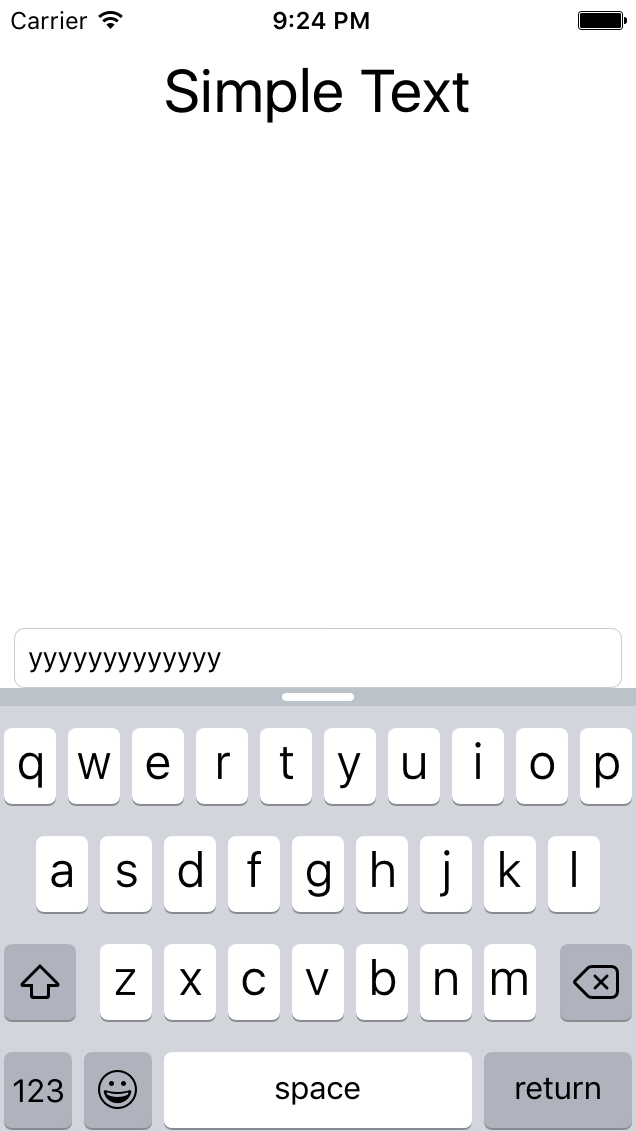简介
通知对象可以携带数据,然后通过通知中心(notification center)进行广播,若想要响应这个通知,接受者需要注册监听这个通知。通知机制的工作原理给我们一个机会,我们可以利用通知机制,达到解藕程序的目的。我们可以把模块的通用功能封装成组件,与业务相关的功能,可以交给组件的使用者实现。组件和组件使用者之间的通信恰好可以使用通知机制来完成。iOS中有三种类型的通知,普通通知,本地通知,以及远程通知。本文讲解的是normal notification,也就普通通知,他是一个NSNotification类型的对象。
发送通知
发送通知的过程:首先,我们需要构造一个通知对象NSNotification,然后通过通知中心NSNotificationCenter的实例方法postNotification广播出去。
头文件
static NSString *const kNotificationName=@"kNotificationName";
@interface ViewController : UIViewController
@end发送通知实现代码
NSNotification *notification=[NSNotification notificationWithName:kNotificationName
object:self
userInfo:@{@"key1":@"value1",
@"key2":@"value2"}];
[[NSNotificationCenter defaultCenter] postNotification:notification];NSNotification对象具有几个重要的属性
Name
这是一个字符串,我们必须为每一个通知指定一个名字,当我们监听通知的时候,需要指明通知的名字。因此,当我们自定义通知的时候,在定义通知名字的头件中详细描述通知的用处,发送对象是谁,包含哪些数据。我们可以参考一下系统文件UIWindow.h中键盘显隐相关的通知的定义。
// Each notification includes a nil object and a userInfo dictionary containing the
// begining and ending keyboard frame in screen coordinates. Use the various UIView and
// UIWindow convertRect facilities to get the frame in the desired coordinate system.
// Animation key/value pairs are only available for the "will" family of notification.
UIKIT_EXTERN NSString *const UIKeyboardWillShowNotification;
UIKIT_EXTERN NSString *const UIKeyboardDidShowNotification;
UIKIT_EXTERN NSString *const UIKeyboardWillHideNotification;
UIKIT_EXTERN NSString *const UIKeyboardDidHideNotification;Sender object 正如其字面意思,指明哪个对象发送通知。通常它的值是self。为什么我们需要指明到底是哪个对象发送通知?比如这样一个场景,应用程序在class1中发送了名字为MyNotification的通知,而且在另一个类class2中发送了一个相同名字的通知,如果接受者A只想接受class1发送的通知MyNotification,不想接受class2的通知,这时候我们在注册通知的时候,指明通知源头为class1就可以了。
User info dictionary
你可以存储一些key/value键值对到字典中。你能过通过user info 传递一些重要信息给接受者。
监听和响应通知
调用NSNotificationCenter的addObserver:selector:name:object方法监听通知。这个方法的参数
addObserver
observer确定谁来观察通知,如果是当前所在的类的话,传递self即可
selector
selector方法接受通知notification,此方法必须有类型为NSNotification的参数
name
通知的名字
object
发送通知的对象
监听通知代码实现
[[NSNotificationCenter defaultCenter] addObserver:self selector:@selector(responseNotification:) name:kNotificationName object:[[ViewController alloc] init]];
实例讲解(监听和响应键盘通知)
问题描述
我们创建一个简单的单视图程序,在屏幕的底部有一个textfield文本输入框,当我们点击textfield输入文字的时候,软键盘会弹出来,而且完完全全地遮住了textfield控件。


解决方案
#import "ViewController.h"
@interface ViewController ()
@property (weak, nonatomic) IBOutlet UIScrollView *scrollView;
@property (weak, nonatomic) IBOutlet UITextField *textField;
@property (weak, nonatomic) IBOutlet UILabel *label;
@end
- (void)viewWillAppear:(BOOL)animated{
[super viewWillAppear:animated];
[[NSNotificationCenter defaultCenter] addObserver:self selector:@selector(handleKeyboardWillShow:) name:UIKeyboardWillShowNotification object:nil];
[[NSNotificationCenter defaultCenter] addObserver:self selector:@selector(handleKeyboardWillHide:) name:UIKeyboardWillHideNotification object:nil];
}- (void)viewWillDisappear:(BOOL)animated{
[super viewWillDisappear:animated];
[[NSNotificationCenter defaultCenter] removeObserver:self];
}
- (void)handleKeyboardWillShow:(NSNotification *)notification{
//获取键盘显示过程的动画时间,以及键盘出现在屏幕中的坐标
NSValue *animationDurationObject=[notification.userInfo objectForKey:UIKeyboardAnimationDurationUserInfoKey];
NSValue *keyboardFrameEndObject=[notification.userInfo objectForKey:UIKeyboardFrameEndUserInfoKey];
double animationDuration=0;
CGRect keyboardFrameEnd=CGRectZero;
[animationDurationObject getValue:&animationDuration];
[keyboardFrameEndObject getValue:&keyboardFrameEnd];
//将frame从window坐标系统转换到我们的视图坐标系统
UIWindow *window=[[UIApplication sharedApplication] keyWindow];
CGRect convertedKeyboardFrameEnd=[self.view convertRect:keyboardFrameEnd fromView:window];
//获取键盘遮盖视图的frame
CGRect intersectionOfKeyboardAndView=CGRectIntersection( self.view.frame,convertedKeyboardFrameEnd);
//滚动scroll view
[UIView animateWithDuration:animationDuration animations:^{
self.scrollView.contentInset=UIEdgeInsetsMake(0.0f, 0.0f, intersectionOfKeyboardAndView.size.height, 0.0f);
}];
}- (void)handleKeyboardWillHide:(NSNotification *)notification{
NSValue *animationDurationObject=[notification.userInfo objectForKey:UIKeyboardAnimationDurationUserInfoKey];
double animationDuration=0;
[animationDurationObject getValue:&animationDuration];
[UIView animateWithDuration:animationDuration animations:^{
self.scrollView.contentInset=UIEdgeInsetsZero;
}];
}
最后,记住实现方法text field的代理方法textFieldShouldReturn:
- (BOOL)textFieldShouldReturn:(UITextField *)textField{
//注销text field的作为第一响应对象,隐藏键盘
[self.textField resignFirstResponder];
return YES;
}
出版社:O‘Reilly
作者:Vandad Nahavandipoor





















 7645
7645











 被折叠的 条评论
为什么被折叠?
被折叠的 条评论
为什么被折叠?








